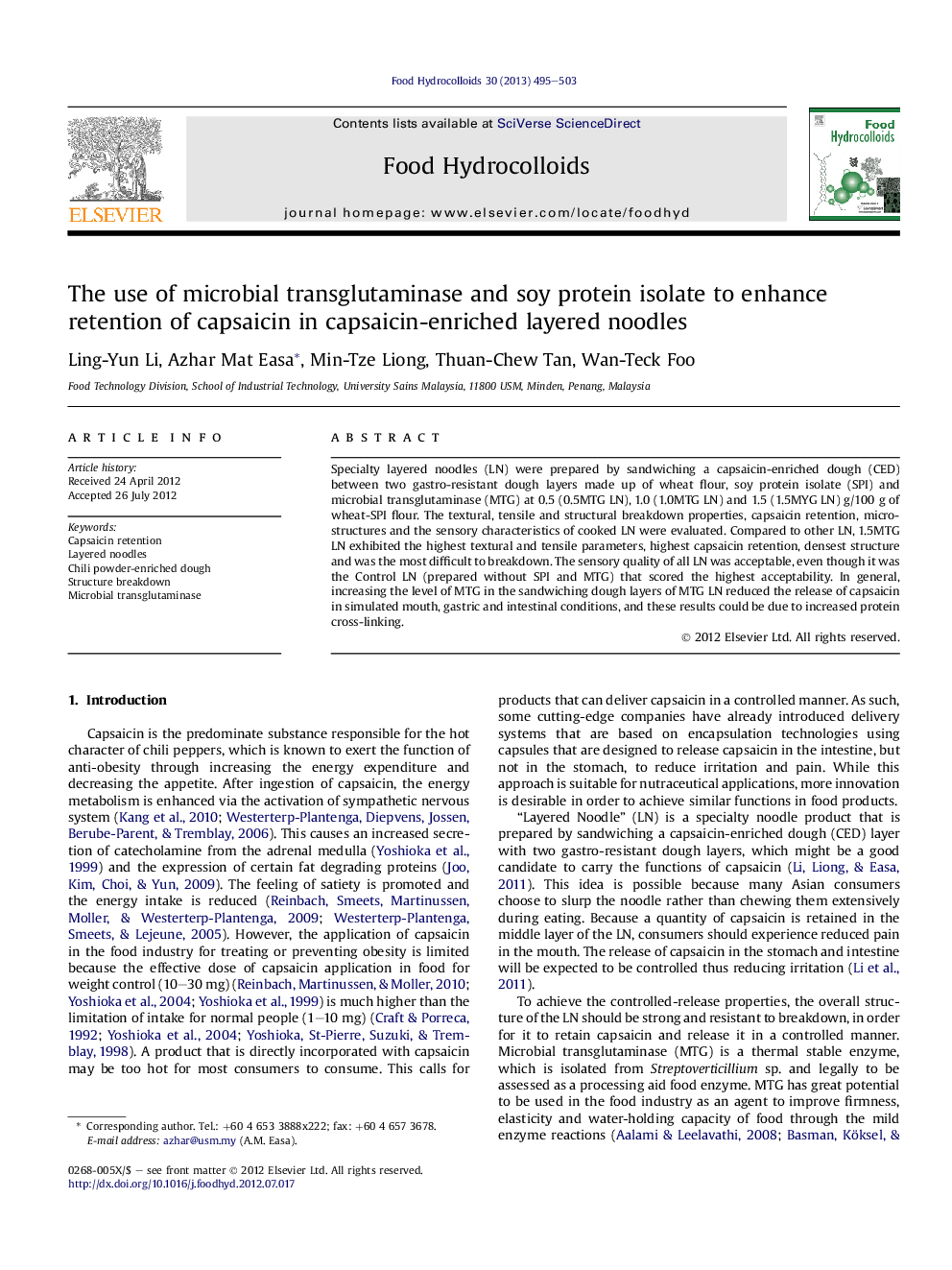| کد مقاله | کد نشریه | سال انتشار | مقاله انگلیسی | نسخه تمام متن |
|---|---|---|---|---|
| 604068 | 1454442 | 2013 | 9 صفحه PDF | دانلود رایگان |

Specialty layered noodles (LN) were prepared by sandwiching a capsaicin-enriched dough (CED) between two gastro-resistant dough layers made up of wheat flour, soy protein isolate (SPI) and microbial transglutaminase (MTG) at 0.5 (0.5MTG LN), 1.0 (1.0MTG LN) and 1.5 (1.5MYG LN) g/100 g of wheat-SPI flour. The textural, tensile and structural breakdown properties, capsaicin retention, microstructures and the sensory characteristics of cooked LN were evaluated. Compared to other LN, 1.5MTG LN exhibited the highest textural and tensile parameters, highest capsaicin retention, densest structure and was the most difficult to breakdown. The sensory quality of all LN was acceptable, even though it was the Control LN (prepared without SPI and MTG) that scored the highest acceptability. In general, increasing the level of MTG in the sandwiching dough layers of MTG LN reduced the release of capsaicin in simulated mouth, gastric and intestinal conditions, and these results could be due to increased protein cross-linking.
Figure optionsDownload as PowerPoint slideHighlights
► Specialty noodles with capsaicin-enriched core.
► Sandwiched with two layers of soy protein and microbial transglutaminase.
► Microbial transglutaminase enhances capsaicin retain-ability.
Journal: Food Hydrocolloids - Volume 30, Issue 2, March 2013, Pages 495–503